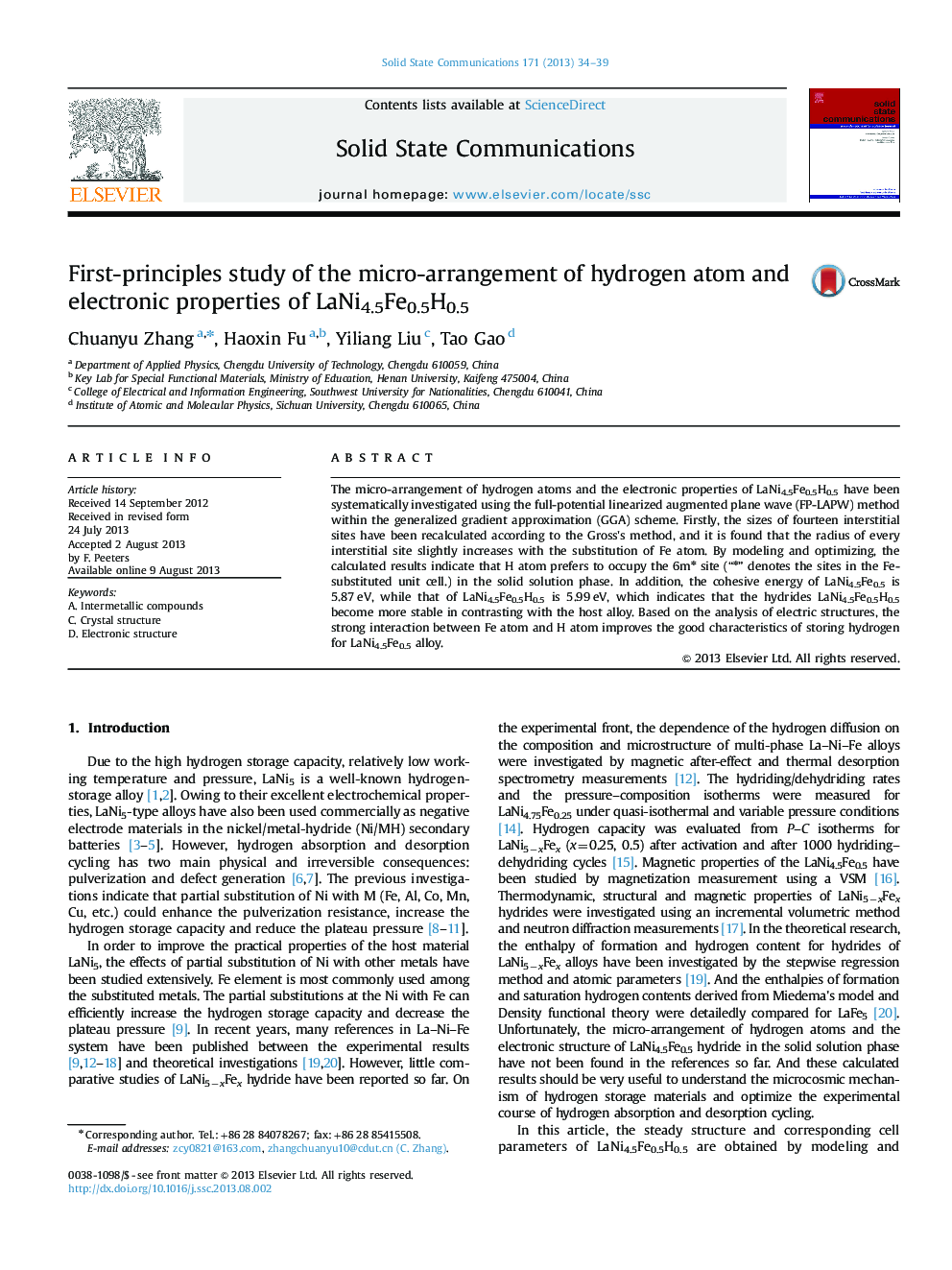| کد مقاله | کد نشریه | سال انتشار | مقاله انگلیسی | نسخه تمام متن |
|---|---|---|---|---|
| 1592259 | 1515624 | 2013 | 6 صفحه PDF | دانلود رایگان |

Author-Highlights
• Hydrogen atom prefers to occupy 6m⁎ sites for solid solution phase.
• LaNi4.5Fe0.5 compound changes more anisotropic after storing hydrogen.
• The strength sequence of interaction with H atom is Fe>Ni(3g)>Ni(2c)>LaFe>Ni(3g)>Ni(2c)>La.
• The interaction of Fe–H and Ni–H mainly forms the covalent bond.
• LaNi4.5Fe0.5H0.5 becomes less stable according to the cohesive energy.
The micro-arrangement of hydrogen atoms and the electronic properties of LaNi4.5Fe0.5H0.5 have been systematically investigated using the full-potential linearized augmented plane wave (FP-LAPW) method within the generalized gradient approximation (GGA) scheme. Firstly, the sizes of fourteen interstitial sites have been recalculated according to the Gross's method, and it is found that the radius of every interstitial site slightly increases with the substitution of Fe atom. By modeling and optimizing, the calculated results indicate that H atom prefers to occupy the 6m⁎ site (“⁎” denotes the sites in the Fe-substituted unit cell.) in the solid solution phase. In addition, the cohesive energy of LaNi4.5Fe0.5 is 5.87 eV, while that of LaNi4.5Fe0.5H0.5 is 5.99 eV, which indicates that the hydrides LaNi4.5Fe0.5H0.5 become more stable in contrasting with the host alloy. Based on the analysis of electric structures, the strong interaction between Fe atom and H atom improves the good characteristics of storing hydrogen for LaNi4.5Fe0.5 alloy.
Journal: Solid State Communications - Volume 171, October 2013, Pages 34–39